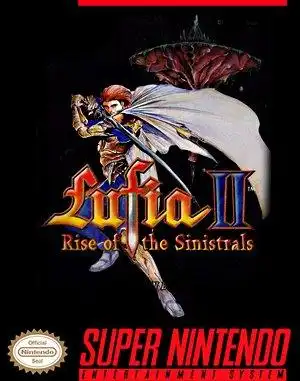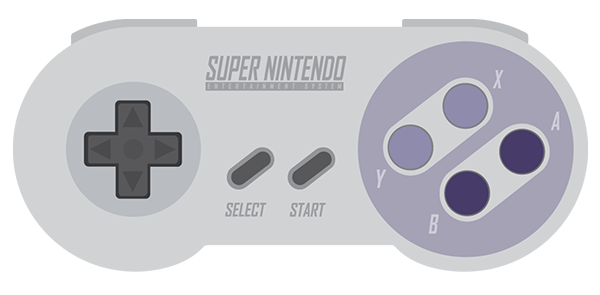Stepping back into the 16-bit era often brings to mind the giants of the JRPG genre, but tucked away among the titans are true gems that deserve just as much praise. One such title, a prequel that arguably surpassed its predecessor in many ways, is Lufia II: Rise of the Sinistrals. Released late in the Super Nintendo's life cycle, this game delivered a potent mix of compelling story, innovative gameplay mechanics, and challenges that stick with you long after the credits roll.
It’s not just another turn-based adventure; Lufia II introduced ideas that felt fresh at the time and hold up remarkably well today. From its unique approach to dungeons to its deep character progression and a legendary post-game challenge, it carved out a special place in the hearts of many retro RPG fans. Let's dive into what makes this game a timeless classic.
A Prequel's Powerful Narrative
While technically a prequel to the first Lufia & the Fortress of Doom, Lufia II: Rise of the Sinistrals tells the story of Maxim, the legendary hero who sealed away the powerful god-like beings known as the Sinistrals centuries before the original game's events. This setup allows for a self-contained, epic tale focusing on the origins of the conflict.
Unlike some simpler RPG narratives of the time, Lufia II isn't afraid to explore mature themes and consequences. Villages are destroyed, characters face real peril, and the journey feels genuinely impactful. The story, while following a classic "gather companions to fight evil" structure, manages surprising emotional depth, leading to a poignant and memorable conclusion that resonates long after the final boss is defeated. The characters are charming and well-developed, making their fates feel significant.
Dungeon Design That Makes You Think
One of the most lauded aspects of Lufia II is its approach to dungeon exploration. Forget endless random encounters! Monsters are visible on the map, and movement within dungeons is turn-based, meaning enemies only move when you do. This simple change transforms dungeons from tedious hallways into tactical puzzles.
Beyond avoiding or engaging foes, Lufia II leans heavily into environmental puzzles. Maxim gains various tools throughout his journey – a bow to trigger switches, bombs to clear obstacles, a hookshot to cross gaps, and more. Solving these puzzles is crucial for progression and often rewards you with valuable items. This focus on brainpower over brute force was a refreshing departure and remains a highlight of the game.
Tactical Combat and Unique Companions
Combat in Lufia II is turn-based, but it adds its own twists. The "IP Skill" system is tied to equipment. As characters take damage, an IP bar fills up, allowing them to unleash special abilities unique to the weapon, armor, or accessory they have equipped. This encourages strategic gear choices, sometimes prioritizing a useful skill over raw stat boosts.
Adding another layer is the "Capsule Monster" system. These findable creatures join your party as a fifth, AI-controlled member. What makes them special is their ability to evolve. By feeding them items and equipment you find, they grow stronger and change forms, gaining new skills and stats. There are several types, each with unique elemental affinities and evolution paths, adding a fun collection and customization element.
The Legend of the Ancient Cave
For many Lufia II veterans, the true test lies within the Ancient Cave. Accessible later in the game, this optional dungeon is a randomly generated, 99-floor roguelike challenge. Upon entering, your characters are reset to level 1, stripped of most of their gear, and must rely on items and levels found within the cave.
Progress resets if you leave (unless you use a rare item) or die. However, certain treasures found in special "blue chests" are permanently kept, even if you fail. This creates an addictive loop of attempting the descent, hoping for rare finds, and pushing your luck. The Ancient Cave alone adds dozens, if not hundreds, of hours of replayability and is a fondly remembered feature.
Why Lufia II Still Shines
Beyond its mechanics, Lufia II boasts a fantastic soundtrack, with memorable battle themes and atmospheric dungeon tunes that perfectly complement the game's mood. The graphics, while not pushing the SNES to its absolute limit, are colorful, charming, and functional, with expressive character sprites and varied environments.
Lufia II: Rise of the Sinistrals is a game that feels greater than the sum of its parts. Its blend of engaging story, clever puzzles, strategic combat, unique monster mechanics, and the massive Ancient Cave side-quest makes it a standout in the crowded SNES RPG library. It's a game that offered immense value then and remains a deeply satisfying experience for retro gamers today. If you've never played it, or it's been years since your last run, it's absolutely worth revisiting this overlooked masterpiece.
Frequently Asked Questions About Lufia II
-
Is Lufia II a direct sequel to Lufia 1? No, it's a prequel set centuries before the first game, focusing on the legendary hero Maxim. You don't need to play Lufia 1 first to understand or enjoy Lufia II.
-
How long is Lufia II? Completing the main story can take around 30-40 hours. However, exploring side quests and especially tackling the Ancient Cave can easily extend gameplay well past 100 hours.
-
Are there random encounters in Lufia II dungeons? No, monsters are visible on the dungeon map. You can choose to engage them or try to avoid them.
-
What makes the Ancient Cave so special? It's a challenging, randomly generated 99-floor dungeon with roguelike elements. Your levels and most gear reset upon entering, but rare blue chest items are permanently kept, offering a unique post-game challenge and reward system.


